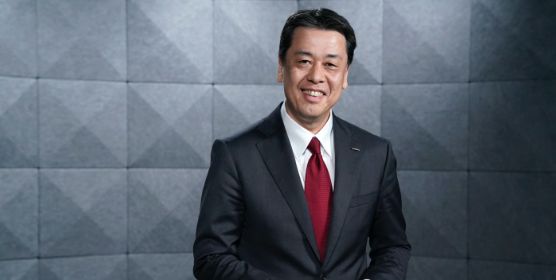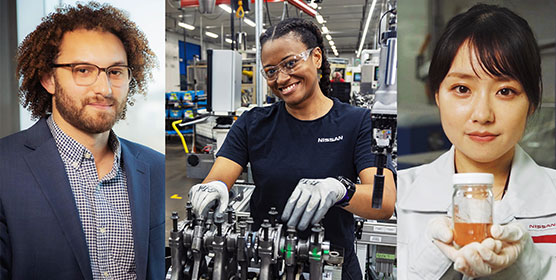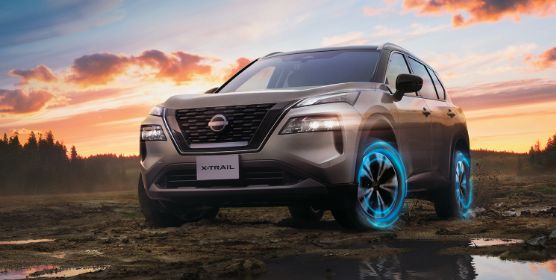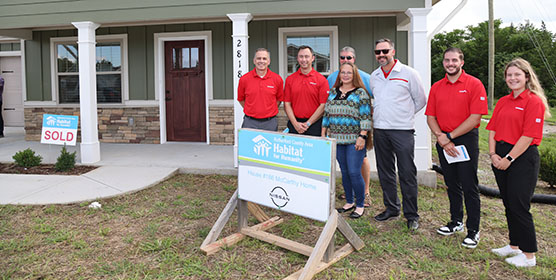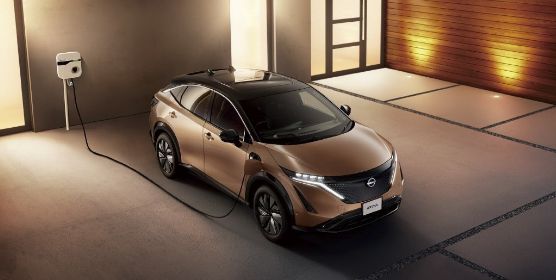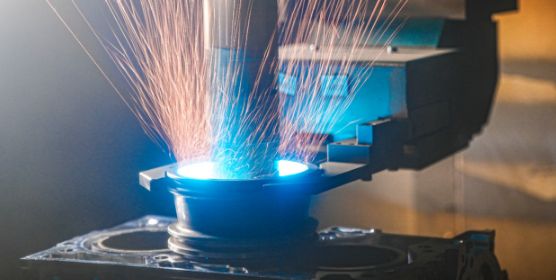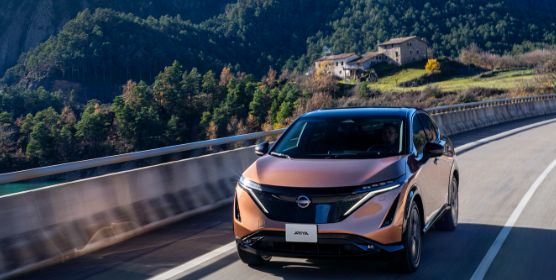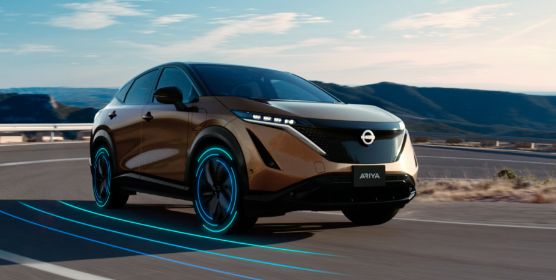Noboru Tateishi, Senior Vice President
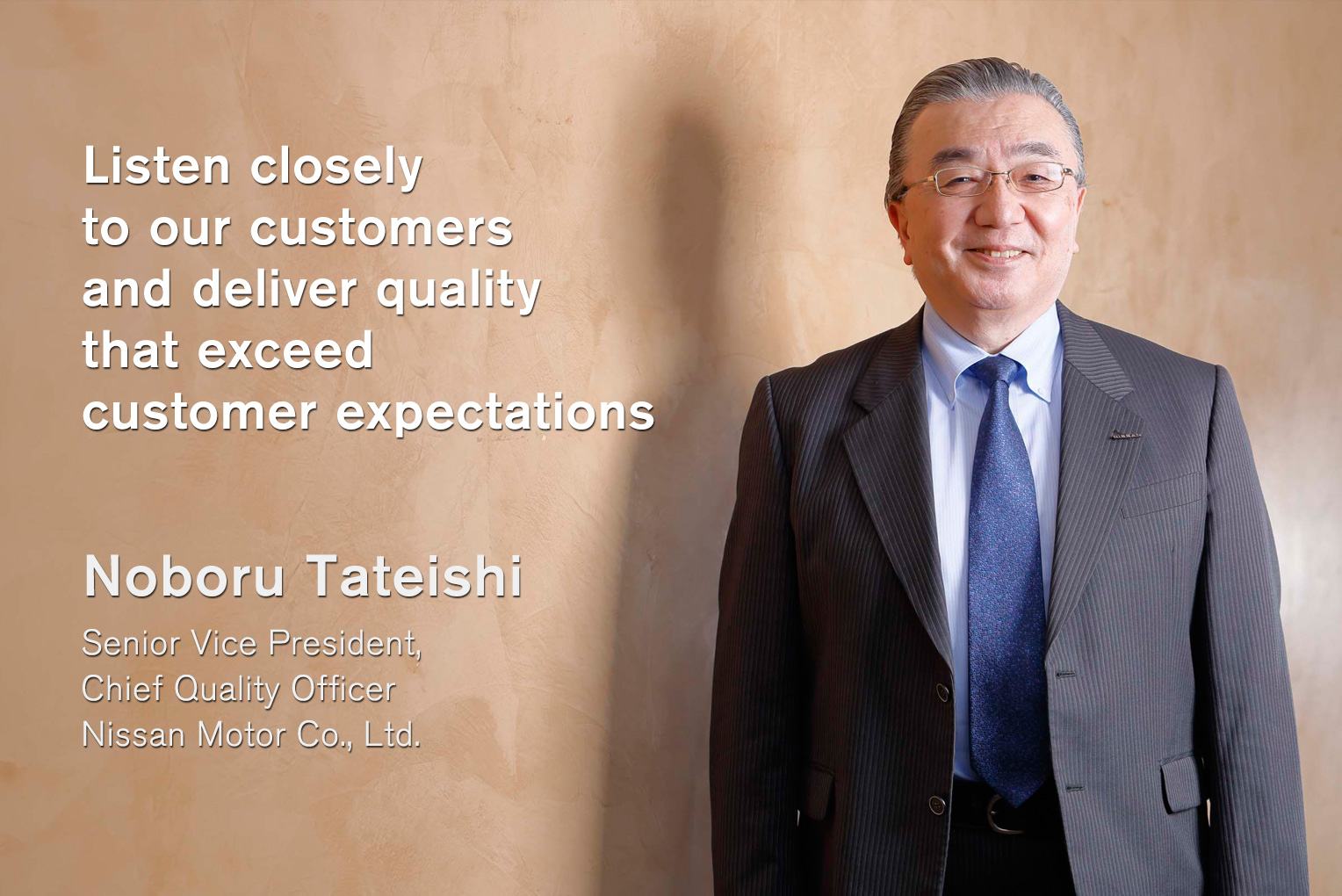
What do you view as key to improving quality at Nissan?
When
people
hear
the
word
“quality,”
they
often
think
of
product
quality,
but
Nissan
views
quality
as
a
companywide
issue.
We
seek
to
provide
the
highest
quality
at
every
stage,
from
new
vehicle
planning
to
development,
manufacturing,
distribution,
sales
and
aftersales
service.
Customers
evaluate
our
quality.
Are
we
meeting
their
expectations?
Are
they
satisfied
with
the
job
we
do?
This
kind
of
customer-centric
thinking
is
fundamental
to
quality
at
Nissan.
We
strive
to
be
better
today
than
yesterday,
better
tomorrow
than
today
and
narrow
the
gap
between
customer
expectations
and
reality.
These
efforts
are
our
quality
improvement
activities.
In
this
context,
I
advocate
for
improving
quality
far
beyond
expectations.
There
are
strict
corporate
procedures
in
place
to
prevent
us
from
investing
excessively
or
incurring
unnecessary
costs.
In
order
to
provide
products
and
services
with
a
level
of
quality
that
will
satisfy
our
customers
within
those
boundaries,
we
need
a
spirit
of
greatly
exceeding
customer
expectations.
One
key
to
this
is
for
all
employees
to
strive
to
reduce
customer
dissatisfaction
to
zero.
Reducing
defects
to
0.0%
is
very
difficult
but
as
a
fundamental
attitude
it
is
important
to
aim
for
zero
defects.
For
that
reason,
we
must
listen
closely
to
our
customers
and
make
steady
improvements.
To
ensure
that
this
approach
is
shared
across
the
company
and
cultivate
a
customer-centric
mindset,
Nissan
operates
a
range
of
activities,
from
companywide
training
to
initiatives
that
let
people
hear
the
everyday
voice
of
the
customer.
Turning
to
quality
management,
we
are
constructing
a
system
for
promoting
quality
improvement
globally,
centered
around
our
chief
quality
officer
(CQO),
the
top
executive
responsible
for
quality.
The
most
important
site
for
monozukuri
is
the
gemba
where
actual
development,
manufacturing
or
sales
take
place.
Reinforcement
of
processes
and
systems
at
the
gemba
is
the
driving
force
behind
quality
improvement.
Our
Total
Customer
Satisfaction
Division
(TCSX),
which
tracks
complaints
and
defects
reported
by
customers,
plays
an
important
role
in
supporting
the
monozukuri
gemba
at
Nissan.
We
coordinate
quality
improvement
efforts
across
the
entire
company
and
resolve
any
problems
that
arise
at
the
gemba
by
working
together.
How are you promoting customer-centric initiatives?
Unlike
one-off
surveys
with
limited
populations
performed
by
external
organizations,
QCS
lets
us
hear
comments
from
more
customers
and
link
specific
comments
to
specific
customers.
For
example,
if
they
express
dissatisfaction
with
noise
levels,
we
follow
up
by
asking
“Can
you
identify
the
component
making
the
noise?”
and
using
this
information
to
improve
quality.
Additionally,
to
respond
to
defects
as
rapidly
as
possible,
we
also
have
processes
in
place
to
send
Nissan
employees
to
the
directly
instead
of
leaving
everything
to
sales
company
representatives.
If
analysis
of
the
issue
appears
that
it
may
take
time,
we
borrow
the
car
and
investigate
it
thoroughly.
Comments
from
the
customer
are
sent
as
feedback
to
all
immediately
and
reflected
in
manufacturing
immediately.

What kind of initiatives to improve product quality are currently underway?
One
type
of
quality
our
customers
demand
is
perceived
quality,
the
quality
they
sense
through
the
look,
touch
and
feel
of
the
car.
To
improve
perceived
quality,
Nissan
conducts
research
and
development
projects
to
scientifically
analyze
human
sensibilities
like
sight,
sound
and
touch.
These
are
efforts
to
scientifically
explain
what
makes
customers
marvel
at
how
great
something
feels.
The
development
team
for
our
electric
powertrain
e-POWER,
which
fuses
a
gasoline
engine
with
a
motor,
is
exploring
what
kind
of
acceleration
feels
most
comfortable
to
people
in
the
car.
For
our
driver
assistance
system,
ProPILOT,
we
thoroughly
surveyed
and
analyzed
customer
impressions
such
as
“Deceleration
feels
scary
when
it’s
too
fast”
and
“If
the
car’s
movements
don’t
match
how
it
feels,
it
makes
me
uneasy,”
to
ensure
that
ProPILOT
would
be
a
pleasant
experience.
We
like
to
think
that
the
Japanese
omotenashi
(hospitality)
admired
by
the
rest
of
the
world
can
also
be
experienced
in
our
driver
assistance
systems.
In
terms
of
initial
quality,
where
the
objective
is
to
reduce
the
incidence
of
defects
to
zero,
our
approach
for
many
years
has
been
based
on
the
idea
that
tackling
issues
one
by
one
is
the
shortest
path
to
quality
improvement.
Even
as
technology
and
features
leap
ahead,
the
results
of
our
quality
surveys
three
months
after
purchase
have
greatly
improved.
“3
Months
in
Service,”
a
representative
indicator
of
quality
for
the
first
three
months
from
sales,
currently
shows
less
than
half
the
defects
it
did
a
few
years
ago.
This
is
also
the
result
of
initiatives
to
manufacture
high-quality
products—initiatives
such
as
cultivating
human
capital
and
continuously
improving
technology—taking
root
globally.
Going
forward,
we
will
continue
making
improvements
while
listening
to
the
customer
and
tackling
issues
one
by
one.
What kind of quality improvement initiatives are underway around advanced technologies like vehicle electrification and intelligence?

No
matter
how
wonderful
a
technology
may
be,
customers
will
not
accept
it
if
there
are
quality
issues.
Currently,
vehicle
electrification
and
intelligence
are
two
areas
of
focus
for
Nissan
and
quality
is
extremely
important
for
both.
As
we
continue
to
deploy
these
new
technologies,
guaranteeing
is
essential.
In
2010,
when
we
released
the
Nissan
LEAF,
a
mass-produced
100%
electric
vehicle,
everyone
involved
in
development
and
production
thoroughly
understood
that
quality
was
more
important
than
anything
else.
The
fact
that
we
have
not
seen
a
single
serious
battery
defect
under
normal
use
is
not
a
coincidence—it
is
the
result
of
every
individual
consistently
working
with
care.
Over
the
long
history
of
the
Nissan
LEAF,
there
has
not
been
a
single
major
defect
and
this
success
story
has
also
influenced
the
Nissan
Ariya.
In fields like electrification and intelligent technologies, the question of how to secure software quality also becomes an issue. At Nissan, in order to ensure that software development does not become a black box, we are reinforcing our human capital in the software field and raising the proportion of software written in-house. We are also constructing systems for comprehensively inspecting software internally and striving to detect defects at an early stage before mass production.
How are you cooperating with suppliers to improve quality?
Nissan cannot develop and manufacture cars alone, so we are also engaged in quality improvement activities with our suppliers. When onboarding new suppliers, we have a list of several hundred evaluation items that we check while visiting their gemba. We ask about things like whether they have systems for clearly distinguishing between satisfactory and defective products and what sort of systems they have in place to prevent problems. For existing suppliers, we diagnose delivered quality and market quality via Supplier Scorecards, and carry out supplier factory audits to evaluate management structure. The important part is not pointing out weaknesses but improving quality together. For example, on scorecards, there are four grades from L1 to L4. These exist to motivate everyone at the supplier. At the annual Global Supplier Quality Meeting, we tell suppliers, “We want you to aim for L1 but we don’t want you to become slaves to your score. This score evaluation is a tool for motivating all your employees and production facilities.” Suppliers are important partners and by cooperating with them to improve things, we can aim to improve quality.
Finally, I would like to reemphasize that we always aim to be better today than yesterday and better tomorrow than today. We will all come together—gemba, management, suppliers—and strive to deliver quality that exceeds customer expectations.
Published in December 2021


